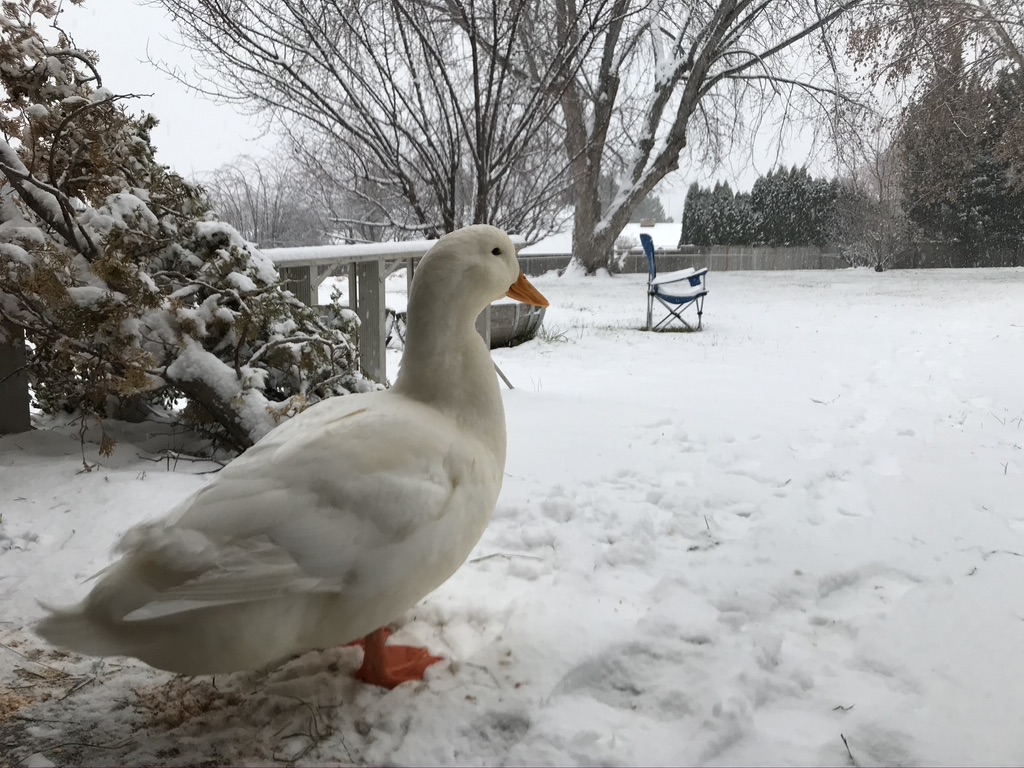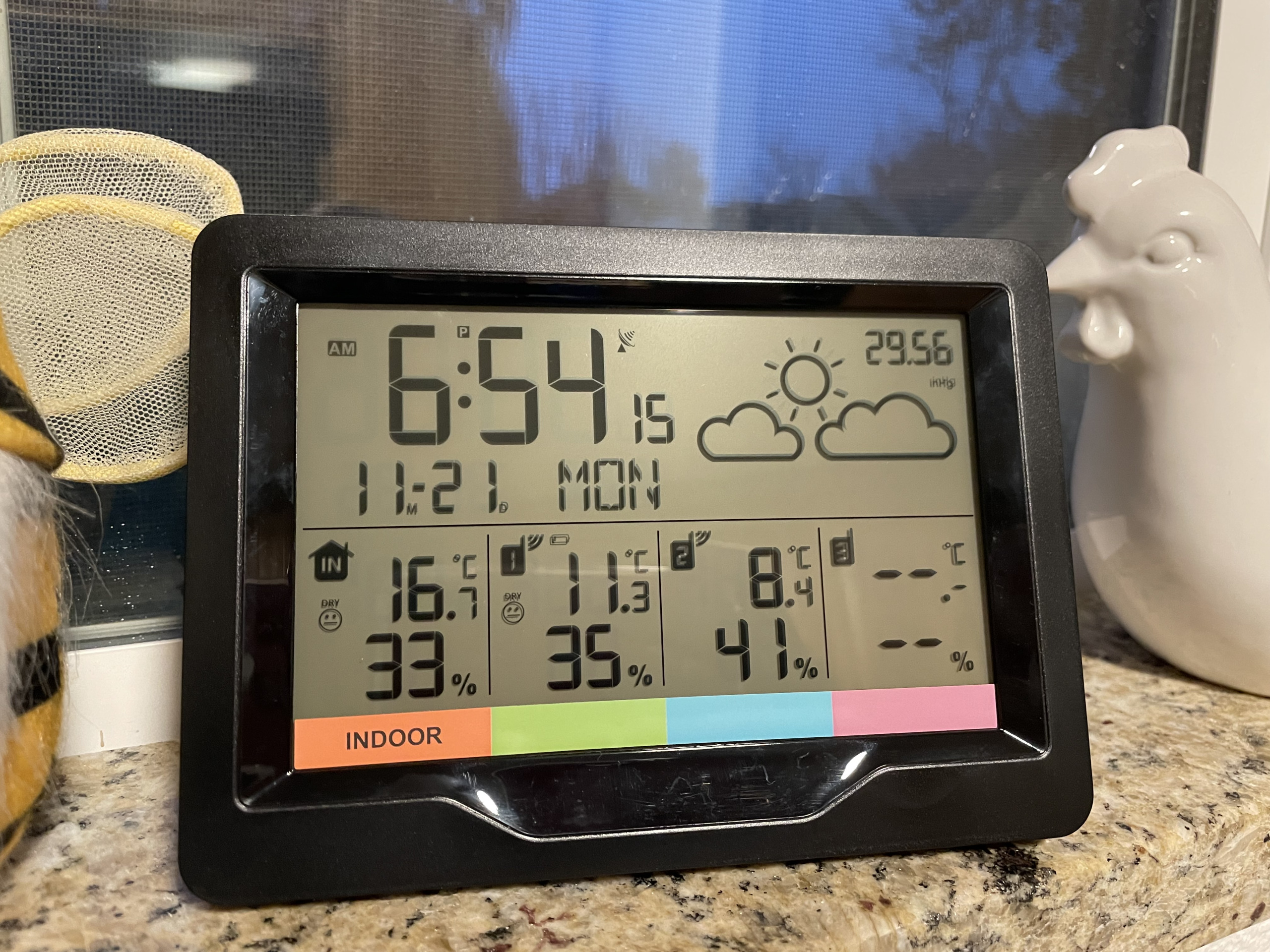It’s that time of year…

…when we step outside and think – today is an indoor day. We want to be in the house, cozy under a blanket, and holding a warm cup of tea. Our feathered friends feel the same way. Well, I don’t know about the tea but we all want to be warm.
To ensure our feathered residents remain cozy and comfortable when the temperature approaches freezing and below, we take the following steps:
- Install radiant heaters where the birds sleep or like to hang out
- Ensure drinking water does not freeze
- Install insulation to the front of the coop
- Add extra bedding (e.g., orchard grass)
- Feed the animals extra food
- Add extra wireless thermometers in the coop


You may be asking yourself…
Why do you use radiant heaters?
To keep the birds warm and prevent frostbite during cold months we use heaters with radiant heat (e.g., cozy coop, sweeter heater). Radiant heaters have a low fire hazard verse other types of heaters (e.g., heat lamps). Although the heaters will not warm up large spaces, birds that rest or perch beside or under them will remain comfortable. For our coop, the heaters also warm the area enough to prevent the drinking water from freezing, which is also very important to prevent in the colder months.
Please make sure to use a heater with a lower fire risk and take extra precautions ensure the safety of the animals. To learn more about fire safety and steps you can take to minimize risk, please visit https://opensanctuary.org/fire/
Why do you add extra bedding?
In the colder months, we provide thick layers of orchard grass in the living and resting places. The orchard grass helps keep the feet and legs warm as they sit, and it is also very soft. No one likes to get poked as they try to relax. The extra bedding also provides enrichment as we hid treats in the grass causing the birds to actively forage for the goodies.
We also use bedding material, mostly pine shavings, to coat walkways that are frozen to prevent the animals from slipping.
Why do you feed the animals extra food?
Food is the fuel that helps keep the animals warm, and the colder it gets, the more food they need.
Why do you use wireless thermometers?
We have wireless thermometers placed where the animals reside at night. The receiver is in the human house enabling us to monitor the coop temperatures, as well as humidity, at a glance. In the photo above, the outdoor temperature is -3C (26F) but where the birds were sleeping it was a cozy 8C-11C (46-52F). This gives us peace of mind the birds are comfortable but this will also alert us to make adjustments, if needed, to maximize comfort for the birds. Note – we use wireless thermometers year round as we also want to monitor for the extreme heat in the summer.
Where can I get more information:
A great resource to caring for chickens can be found at https://opensanctuary.org/the-care-of-chicken-residents-in-extreme-cold/
What winter considerations should we take for other types of farm animals?
A great resource is Open Sanctuary Project. For general winter related preparations, please visit: https://opensanctuary.org/winter-and-cold-weather-considerations-for-animal-sanctuaries/